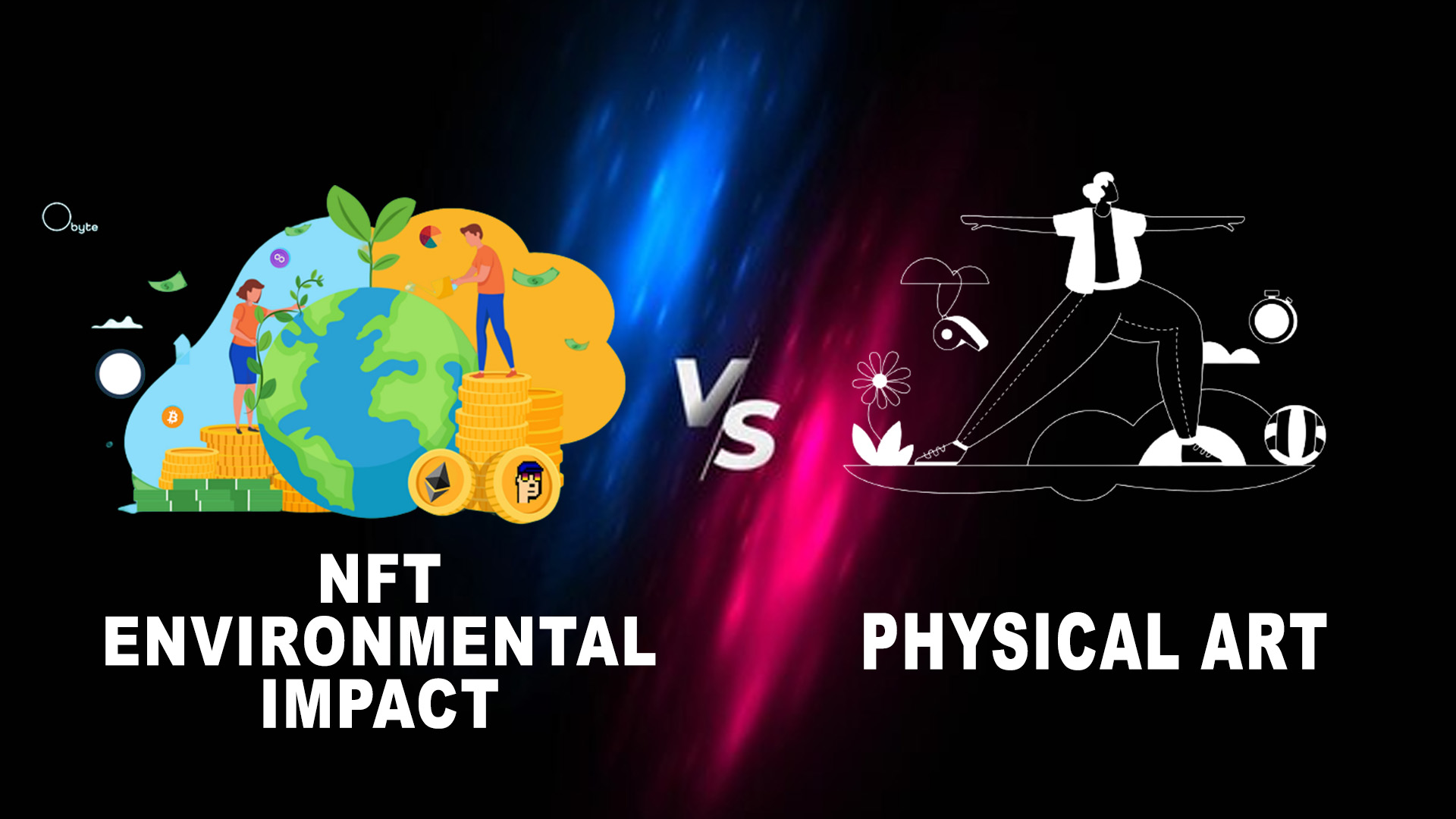
NFT Environmental Impacts vs Physical Art
Key points
- NFTs and Blockchain Technology:
Explore the mechanism of NFT creation and ownership using blockchain technology.
- Explain the energy consumption associated with blockchain networks, particularly Proof of Work (PoW) systems.
- Digital Art and Carbon Footprint:
Discuss the carbon footprint associated with creating and trading NFTs due to energy-intensive blockchain networks.
- Highlight the debates surrounding the energy efficiency of different blockchain consensus mechanisms.
Introduction
In recent years, the rise of Non-Fungible Tokens (NFTs) has transformed the art world, offering digital artists new opportunities for ownership and collectors novel ways to own unique pieces. However, this digital revolution has also sparked discussions about its environmental impact when compared to the traditional creation and ownership of physical art. Let us delve into the environmental considerations surrounding NFTs and physical art.
NFT Environmental Initiatives:
- Explore ongoing efforts within the NFT space to reduce carbon emissions, such as transitioning to Proof of Stake (PoS) networks.
- Highlight platforms and artists adopting eco-friendly practices and contributing to sustainability.
Physical Art Conservation and Preservation:
Emphasize the significance of preserving physical art for generations, reducing the need for continuous production.
Discuss the cultural and historical value of physical art and its role in legacy.
NFT Environmental Impact vs Physical Art: A Balanced Perspective
While NFTs have brought undeniable innovation to the art world, their environmental impact cannot be overlooked. The energy consumption of blockchain networks, particularly those using PoW, has raised concerns about sustainability. However, it is important to recognize that technological advancements are continually being made to address these challenges.
NFT platforms and creators are increasingly exploring PoS networks, which have significantly lower energy consumption compared to PoW. These efforts can mitigate the carbon footprint resulting from NFT creation and trading. Furthermore, conscious artists and platforms are implementing strategies to offset emissions and contribute positively to the environment.
On the other hand, physical art also has its environmental considerations. The production of canvases, pigments, and transportation of artworks contribute to the carbon footprint. However, physical art’s potential for longevity and preservation can alleviate the pressure for continuous creation.
Conclusion
As the debate between NFTs and physical art’s environmental impact continues, it is crucial to view both sides in a broader context. While NFTs have introduced novel opportunities for artists and collectors alike, their energy consumption should drive the industry towards more sustainable practices.
Ultimately, the evolution of NFT technology, coupled with the adoption of eco-friendly initiatives and the recognition of physical art’s cultural and historical value, can lead to a more balanced and environmentally conscious art world. Whether in the digital realm or the physical gallery, the path towards sustainability of art requires collaboration, innovation, and a shared commitment to preserving our planet.
